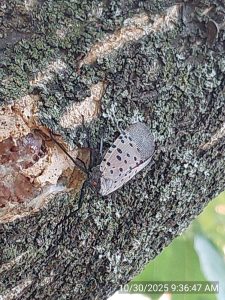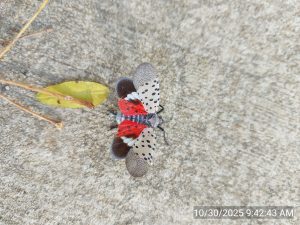It’s always a sad day saying goodbye to a healthy tree, but sometimes removing a tree protects our environment and ecology. Many of the trees and shrubs in cultivation are imported from other areas of the world. As people and families move to new areas, they often times will bring useful plants with them. Sometimes exotic plants are imported specifically for commercial uses. This effect is not exclusive to importing; a number of useful ornamental and crop producing plants have been exported to places outside of North America as well.
Today, we’re talking about the problematic invasive tree of heaven, or Alianthus altissima. Tree of heaven was brought to the United States from Asia in the 1700s. Its ability to grow in very poor soils and urban conditions made it a desirable ornamental tree before anyone recognized its invasive tendency. An invasive plant is identified as causing economic or ecological harm to an existing ecosystem. Tree of heaven’s fast growth and capacity to shade out and out-compete native species of trees and shrubs causes significant harm to our native habitats. For these reasons, tree of heaven was officially placed on the exotic invasive weeds list for Illinois in October of this year. For these reasons, our Illinois Tech facilities staff has been planning to remove two trees of heaven from our collections.

Adult spotted lantern fly on a tree trunk.
If tree of heaven being invasive wasn’t bad enough, it turns out these trees are also harboring a new invading insect: spotted lantern fly! Spotted lantern fly (SLF) is another invasive species from Asia. SLF was first discovered in Cook County only a few years ago, and was spotted in the Illinois Tech campus arboretum this fall. SLF is a leaf-hopper true insect which sucks the sap juices from host plants and excretes a sticky substance called honeydew. Although SLF isn’t a direct cause of harm to the host tree, the honeydew it excretes can create sticky surfaces under the canopy of host trees and host a black mold (called sooty mold) which causes discoloration.

An adult spotted lantern fly.
As stewards of our local ecosystems, we do our due diligence to lead by example and not maintain problematic invasive organisms in our campus arboretum collection. You can learn more about the invasive tree of heaven here.
Learn about Spotted lantern fly here.
